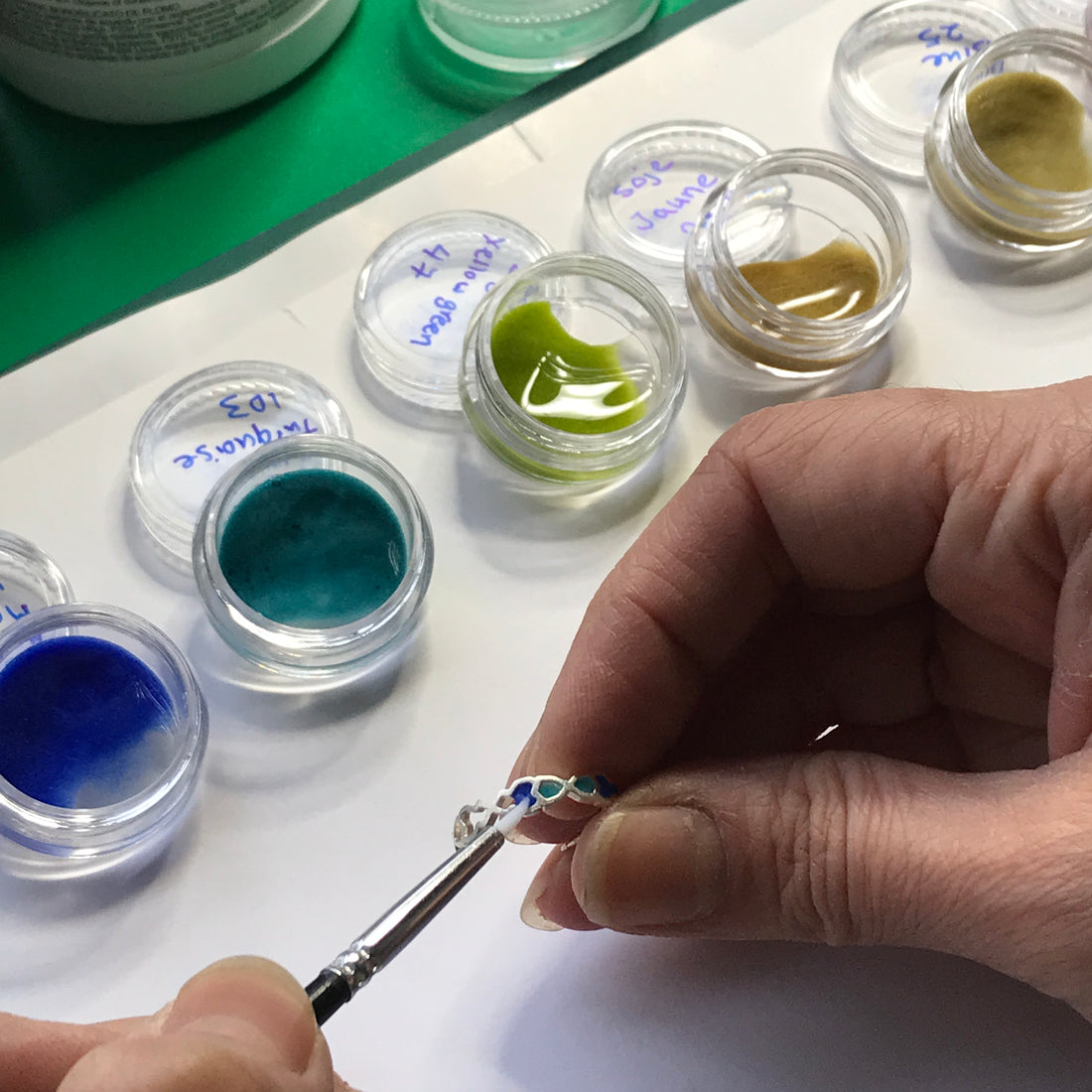
What Does Vitreous Enamel Mean?
What is vitreous enamel?
Vitreous enamel is a special kind of glass, specifically formulated to fused to a metal substrate material -such as gold, platinum, silver, copper, steel, or cast iron, etc. - using fire, usually between 750 and 850°C (1,380 and 1,560 °F). During this process, the glass powder melts, flows and then hardens to a smooth, durable vitreous coating on the metal surface.
Enamel, like all glass, is made of several ingredients: silica, flux, stabilisers and colourants.
Enamel has some common characteristics with crystal, a kind of high- quality glass with unique properties, being the main difference the addition of metal oxides to the enamel to create colours. There are three different categories of enamels based on how they allow light to pass through: transparent, opaque and opalescent.
How enamel objects, are made?
The artist buys the enamel either in lumps or powder form, and then grinds them to finer grains, washing them thoroughly, resulting in a final powder form. This important process gives the transparent enamels their final brilliance aspect.
Then, the resulting fine powder is applied, using various methods and techniques, to the metal substrate surface. After this, the jewellery piece itself is heated to 750 -850 °C, either in a preheated kiln or with a handheld torch. Following this step, the piece is removed from the heat and allowed to cool down to room temperature. For a smooth, bright and vivid finish usually 3 or more coats are required, and even up to 10-20 firings are required to bring the desired results to life.
How to differentiate good quality enamel jewellery from the rest?
A quality enamel work art should have a sense of design, a feeling for proportion and appropriate colour and texture. Transparent enamels should be jewel-like. The firing of all enamels should be sufficient to ensure a permanent bond of the chosen glass to the metal. The final work should show that the artist has full control of the technique and materials.
